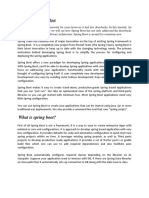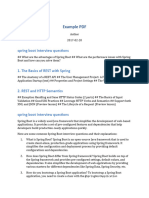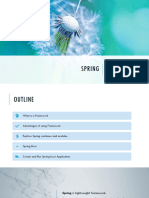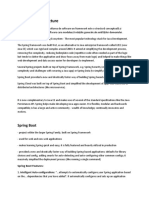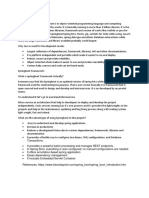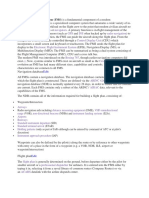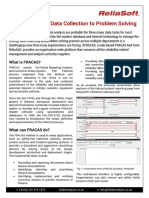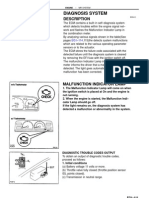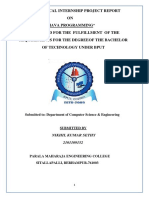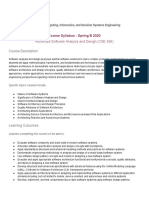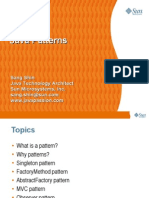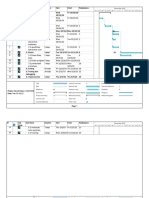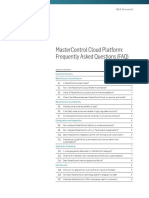0% found this document useful (0 votes)
153 views23 pagesSpring Boot Notes
Chapter 4 introduces the Spring Framework and Spring Boot, highlighting Spring's role as an open-source Java platform that simplifies application development through features like Dependency Injection and Aspect-Oriented Programming. It discusses Spring Boot as a framework for creating microservices with minimal configuration, emphasizing its advantages such as embedded servers and reduced boilerplate code. The chapter also outlines the architecture of Spring Boot applications, the setup process in Spring Tool Suite, and the use of Spring Boot starters for dependency management.
Uploaded by
Rakshitha RakshithaCopyright
© © All Rights Reserved
We take content rights seriously. If you suspect this is your content, claim it here.
Available Formats
Download as PDF, TXT or read online on Scribd
0% found this document useful (0 votes)
153 views23 pagesSpring Boot Notes
Chapter 4 introduces the Spring Framework and Spring Boot, highlighting Spring's role as an open-source Java platform that simplifies application development through features like Dependency Injection and Aspect-Oriented Programming. It discusses Spring Boot as a framework for creating microservices with minimal configuration, emphasizing its advantages such as embedded servers and reduced boilerplate code. The chapter also outlines the architecture of Spring Boot applications, the setup process in Spring Tool Suite, and the use of Spring Boot starters for dependency management.
Uploaded by
Rakshitha RakshithaCopyright
© © All Rights Reserved
We take content rights seriously. If you suspect this is your content, claim it here.
Available Formats
Download as PDF, TXT or read online on Scribd
/ 23














